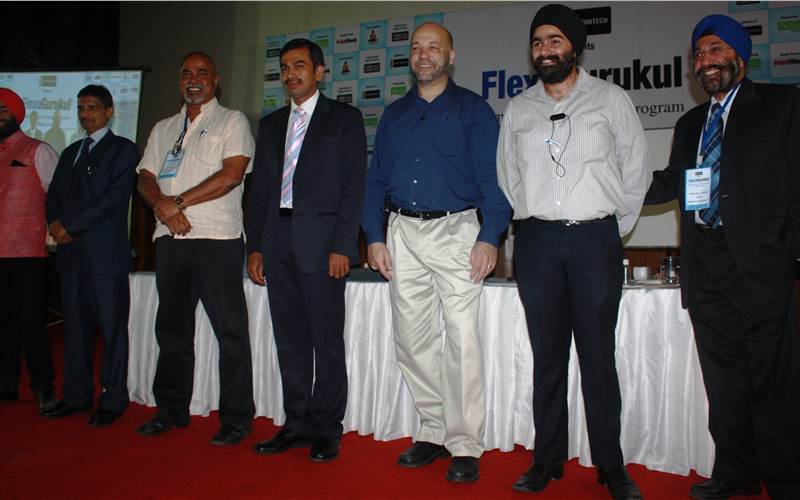Flexo Gurukul teaches how to spot perfect spot colour
As competition grows, like other segments in the print industry, flexo printers too are feeling the heat. Despite there being a surge in demand, profit margins seem to be thinning. To top that, print buyers today are strategising ways to make their buy cost-effective. Reverse auction has become a common practice.
28 Oct 2014 | By Dibyajyoti Sarma
 In this context, how should a printer react? “Abstention and stagnation is not the right option, as it will make the printer obsolete in the competitive market. Instead, it’s time to step up the game, in terms of technical knowhow and quality control, to make printing cost-effective,” said Harveer Sahni, chief mentor, Fasco Printech.
In this context, how should a printer react? “Abstention and stagnation is not the right option, as it will make the printer obsolete in the competitive market. Instead, it’s time to step up the game, in terms of technical knowhow and quality control, to make printing cost-effective,” said Harveer Sahni, chief mentor, Fasco Printech.
He was speaking on the first day of the Autumn 2014 edition of Flexo Gurukul, a seminar-based technical training programme for printers who are printing on flexo presses or are willing to enter into the narrow and wide web flexography printing.
Flexo Gurukul, an initiative by Fasco Printech, and powered by US-based FlexoExchange, which offers training services in the field of flexographic printing, was held at Pragati Maidan on 27-28 October.
Sahni said the idea behind Flexo Gurukul was to create a platform for flexo printers to come together in a competition-neutral environment. “The idea is to share knowledge, in an environment where the printers are not competitors, but colleagues, who someday may even become friends,” said Sahni.
This is the reason why, Sahni said, there was no sponsored talk in the event. The plan is to make Flexo Gurukul a reference point for printers to seek knowledge, which, in turn, will help run their businesses.

The first chapter was on ‘spot colour expectations and challenges,’ where Burgos stressed on the importance to focus on the minor details in the pressroom, since even a small mistake may cost dear for the printer. He then went on to discuss the practical details of spot colour (used in branding, background, etc), and how to reproduce the colour accurately. Burgos started by announcing that it is almost impossible to get the same spot colour twice, as actual printing involves not only ink blending, but also what kind of anilox rolls are used and what substrates are used. There are also issues of illumination, how colours are perceived in different kind of lighting.
In the second chapter, Burgos went on to demonstrate methodically how spot colours can be achieved via mathematics, which he called, “Math defining paths.” Here, he insisted that to achieve results through spot colour formulas, detailed documentation of the activities in the ink kitchen is a must. He also stressed on communication between various stakeholders in the process for optimised use of ink. “Every printer should have a documented system in place to achieve quality control,” he said.
In the third chapter, on ‘blending spot colour with greater success,’ Burgos stressed on the need for an ergonomic ink kitchen, where everything needed for creating a perfect blend of colour is available and is within reach.
In chapter four, the day’s last session on ‘working off spot colour inks’, Burgos talked about recycling of surplus spot colour batches to keep the ink inventory levels low and fresh.
The previous session of Flexo Gurukul was held in Mumbai on 28-29 April, 2014.
PrintWeek India is the media partner for the event.













 See All
See All